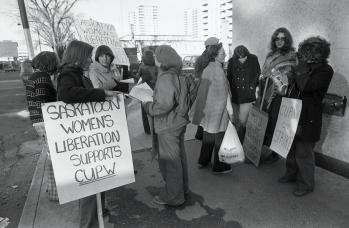

As employment relationships changed in response to industrialization in 18th- and 19th-century Britain, workers chose to form organizations known as trade unions which could represent their collective interests as a counterweight to the power of their employers. Participation in trade unions was initially characterized as criminal activity because of the capacity of these organizations to influence the contractual relationship between an employer and an individual employee. By the early 20th century, statutory enactments in Britain and Canada had removed the stigma of criminality from trade unions. The courts continued, however, to impose civil consequences for many forms of union activity through legal actions designed to protect individuals and corporations from unlawful interference with their commercial undertakings.
In the context of criminal and civil law principles which placed severe restrictions on trade unions, it is perhaps not surprising that unions saw their experience with the courts as largely negative. When collective bargaining statutes similar to the Saskatchewan Trade Union Act were passed in Canada in the 1940s, union disaffection with the courts was one of the reasons the administration of the new legislative system was put in the hands of independent labour relations boards on which the unions were explicitly represented. With emergence of the new collective bargaining statutes, it fell to labour relations boards to determine many of the issues associated with the employment relationship in unionized workplaces. In Saskatchewan as elsewhere, the courts nonetheless continued to play a significant role in certain aspects of industrial relations, notably in the case of industrial conflict. The Trade Union Act made strikes and other industrial action lawful under certain circumstances; but it did not, from the point of view of the courts, answer all questions about the legal character of activities associated with strikes, such as picketing.
It was clear that activity which was in itself criminal or legally wrongful, such as assault, destruction of property, or menacing behaviour, was not protected simply because it was associated with a strike. More complex questions arose, however, about whether picketing or other kinds of industrial action could still be the basis for traditional legal actions based on interference with the economic activity of employers, notwithstanding that a strike itself might be legal under the Trade Union Act. Labour disputes typically unfold and evolve rapidly, and remedies which require awaiting the outcome of a complete civil trial were not considered useful by employers. What employers often sought from the courts was immediate assistance in the form of an injunction, a remedy which drew on the power of the courts to ameliorate the situation of an employer who claimed to face drastic consequences if the activity initiated by the union was not brought to a halt in short order. On an application for an injunction, applicants are not required to prove the case fully on its merits, but only to make a plausible case that, before the case can be heard in its entirety by the court, they will suffer harm which cannot be reversed later.
The way in which the courts have approached the determination of applications for labour injunctions has changed significantly over time in Saskatchewan. In the first couple of decades following the passage of the Trade Union Act, the courts continued to place fairly serious limits on the activities which unions could carry out without incurring an injunctive order. In one case in 1964, for example, the Saskatchewan Court of Appeal upheld an injunction issued by a Queen's Bench judge which was partly based on a finding that, although the members of the union had been picketing peacefully, their picket signs were designed not simply to provide information, but to persuade others not to cross the picket line - which could be construed as interfering with the business interests of the employer.
Although the courts in Saskatchewan continued to entertain injunction applications in industrial disputes, they began to give trade unions more latitude with respect to activities which would be considered acceptable. In the 1980s, the Court of Appeal acknowledged that picketing by its nature is designed to persuade - not simply to inform - and decided that picketing was an acceptable part of strike action so long as it was conducted peacefully. More recently still, in 1998, the Saskatchewan Court of Appeal recognized that picketing as such is a form of expression protected by the Canadian Charter of Rights and Freedoms, and that the objective of inflicting economic harm on an employer is not an aberration, but an inherent component of picketing activity. The Court further recognized that the Trade Union Act gave rise to a new legal regime for trade unions, one in which industrial conflict, though subject to regulation, is regarded as a natural part of the collective bargaining relationship; the statute represented a conscious departure on the part of the legislature from a traditional system which stressed the property and commercial interests of employers.
Although trade unions still express concern that the courts are not a hospitable environment from their point of view, judicial decisions of the kind described above show that the courts are reinterpreting their role in labour relations in the light of legislative and constitutional developments.
Beth Bilson